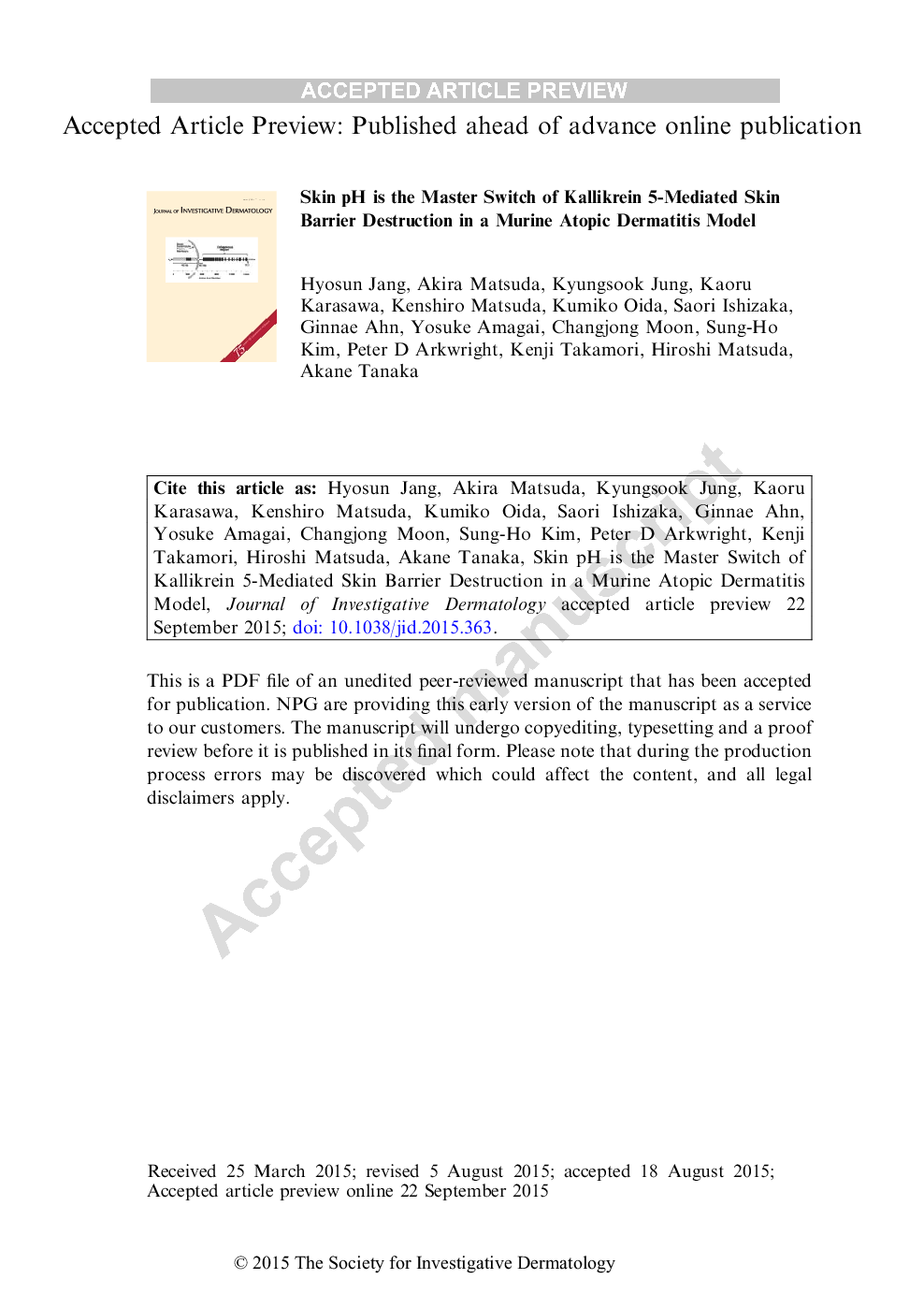| Article ID | Journal | Published Year | Pages | File Type |
|---|---|---|---|---|
| 6074779 | Journal of Investigative Dermatology | 2016 | 32 Pages |
Abstract
Elevated skin surface pH has been reported in patients with atopic dermatitis. In this study, we explored the role of skin pH in the pathogenesis of atopic dermatitis using the NC/Tnd murine atopic dermatitis model. Alkalinization of the skin of asymptomatic NC/Tnd mice housed in specific pathogen-free conditions induced kallikrein 5 and activated protease-activated receptor 2, resulting in thymic stromal lymphopoietin secretion and a cutaneous T-helper 2 allergic response. This was associated with increased transepidermal water loss and development of eczematous lesions in these specific pathogen-free NC/Tnd mice, which normally do not suffer from atopic dermatitis. Injection of recombinant thymic stromal lymphopoietin also induced scratching behavior in the specific pathogen-free NC/Tnd mice. Thymic stromal lymphopoietin production and dermatitis induced by alkalinization of the skin could be blocked by the protease-activated receptor 2 antagonist ENMD-1068. In contrast, weak acidification of eczematous skin in conventionally housed NC/Tnd mice reduced kallikrein 5 activity and ameliorated the dermatitis. Onset of the dermatitis was associated with increased epidermal filaggrin expression and impaired activity of the sodium/hydrogen exchanger 1, a known regulator of skin pH. We conclude that alterations in skin pH directly modulate kallikrein 5 activity leading to skin barrier dysfunction, itch, and dermatitis via the protease-activated receptor 2-thymic stromal lymphopoietin pathway.
Keywords
Related Topics
Health Sciences
Medicine and Dentistry
Dermatology
Authors
Hyosun Jang, Akira Matsuda, Kyungsook Jung, Kaoru Karasawa, Kenshiro Matsuda, Kumiko Oida, Saori Ishizaka, Ginnae Ahn, Yosuke Amagai, Changjong Moon, Sung-Ho Kim, Peter D. Arkwright, Kenji Takamori, Hiroshi Matsuda, Akane Tanaka,
